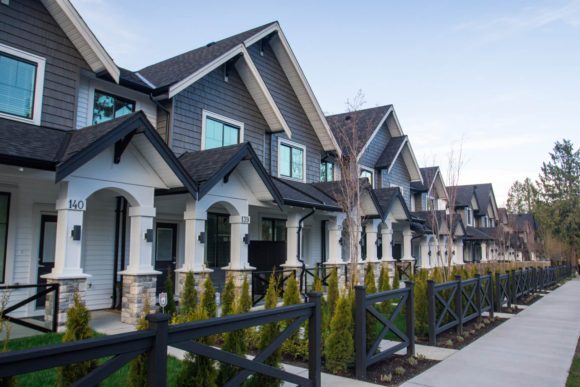We recently received a question from a reader who had a customer with several single-family dwellings as rentals, all written on carrier-specific DP 00 03 (DP-3) policies. The question: “What are the pros and cons about leaving the dwellings on their separate DP-3’s or moving them to a Commercial Property Policy CP 00 10, with Special Causes of Loss (CP 10 30) form attached?”
The coverage issues aside, consider that the customer had multiple dwellings. Having those dwellings on a DP-3 requires a separate policy for each building. As long as nothing goes wrong, or no claims issues crop up, this can be sustained. As long as a single carrier is happy to write all of the dwellings, there are few issues.
It’s also possible that with multiple policies, something gets missed on one policy. An endorsement to expand coverage may be added to one policy with the intent to add it to all, but that never happens. On the other hand, the commercial property policy would allow all of the dwellings to be listed on one policy. It’s always simpler for the customer to keep track of one policy, rather than multiple policies.
There are some coverage differences. In the end, the policies could be considered comparable, however that doesn’t make them the same.
Let us review a few of the differences and see what they may mean.
Insuring Agreement
The insuring agreement for Coverage A on the DP 00 03 (Dwelling Property 3 – Special Form) reads (in part) as follows.
We cover:
The dwelling on the Described Location shown in the Declarations, used principally for dwelling purposes, including structures attached to the dwelling;
Compare that with Covered Property: Building on the CP 00 10 (Building and Personal Property Coverage Form).
Building, meaning the building or structure described in the Declarations, including:
- Completed additions;
- Fixtures, including outdoor fixtures;
- Permanently installed:
- Machinery; and
- Equipment;
- Personal Property owned by you that is used to maintain or service the building or structure or its premises, including:…
You see the differences. The different ways that the covered buildings are described may require updates to the valuation of the building in order to maintain proper coverage. This may not be a big deal, but then again it may. We have to pay attention to the differences.
Fair Rental Value
Consider also this coverage that is included on the DP-3 policy.
Coverage D – Fair Rental Value
- If a loss to property described in Coverage A, B or C by a Peril Insured Against under this policy makes that part of the Described Location rented to others or held for rental by you unfit for its normal use, we cover the fair rental value of that part of the Described Location rented to others or held for rental by you less any expenses that do not continue while that part of the Described Location rented or held for rental is not fit to live in.
The policy also provides a limit of insurance for this coverage.
Rental Value And Additional Living Expense You may use up to 20% of the Coverage A limit of liability for loss of both fair rental value as described in Coverage D and additional living expenses as described in Coverage E. This coverage is additional insurance.
This makes the fair rental value coverage a function of the coverage for the dwelling, which is another reason to make sure that the dwellings are properly covered.
This coverage is not included at all on the CP 00 10. It’s not that it cannot be covered. You already know that the insured could get coverage for Business Income (with or without Extra Expense) to make sure that they are covered in the event of a covered loss to the buildings. The upside of having that separate policy is that the insured can buy limits that ensure that they receive their business income in the event of a loss while the dwelling policy is limited to 20% of Coverage A.
Covered Causes of Loss
Another point of consideration must be the Covered Causes of Loss (or Perils Insured Against on the DP-3). The DP-3 reads in part as follows.
Coverage A – Dwelling And Coverage B – Other Structures
- We insure against risk of direct physical loss to property described in Coverages A and B.
Coverage C – Personal Property
We insure for direct physical loss to the property described in Coverage C caused by a peril listed below unless the loss is excluded in the General Exclusions.
When the CP 10 30 (Causes of Loss – Special Form) is attached to the Commercial Property Policy, the wording is a little different.
Covered Causes of Loss
When Special is shown in the Declarations, Covered Causes of Loss means direct physical loss unless the loss is excluded or limited in this policy.
The Commercial Property Policy allows this form to apply whenever it is selected, including business personal property. The DP-3 policy provides only those causes of loss as listed in the policy to apply to the personal property. This could be changed by endorsement, but it is one more thing that the customer and agent have to make sure is correct.
There are other places where the policies differ. And of course there are things that make different carriers more or less appealing (including price, deductibles, endorsements, and coverage extensions).
Topics Profit Loss Property
Was this article valuable?
Here are more articles you may enjoy.



 Wildfires, Storms Fuel 2025 Insured Losses of $108 Billion: Munich Re Report
Wildfires, Storms Fuel 2025 Insured Losses of $108 Billion: Munich Re Report  Supreme Court Rejects Challenge to $2.46B Boy Scouts Sex Abuse Settlement
Supreme Court Rejects Challenge to $2.46B Boy Scouts Sex Abuse Settlement  Billionaire NFL Owner Suing Over Billboards Near His LA Stadium
Billionaire NFL Owner Suing Over Billboards Near His LA Stadium  APCIA Backs Federal Bill to Require Litigation Funding Disclosure
APCIA Backs Federal Bill to Require Litigation Funding Disclosure 



